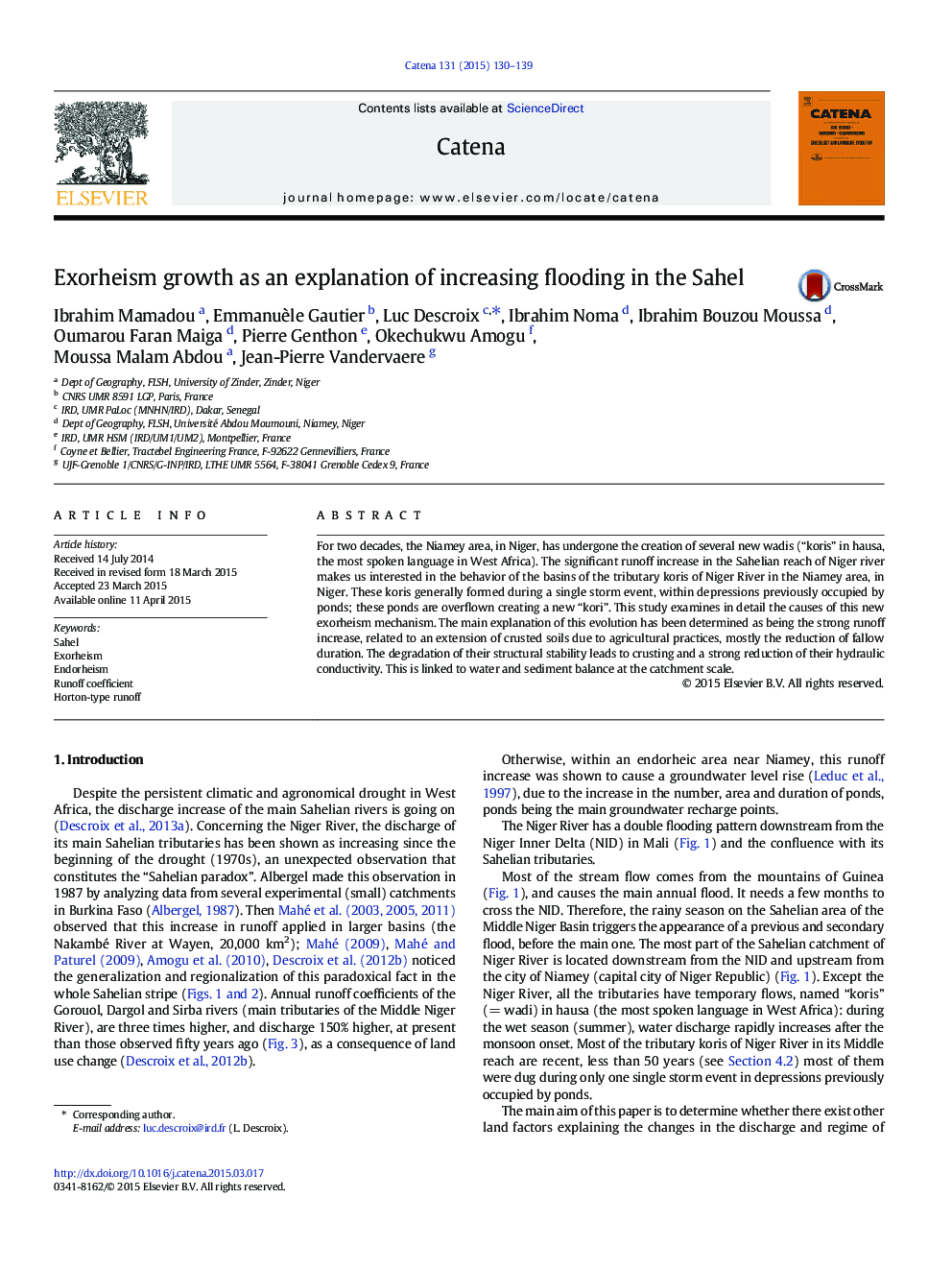| Article ID | Journal | Published Year | Pages | File Type |
|---|---|---|---|---|
| 4571134 | CATENA | 2015 | 10 Pages |
•An increase in runoff is observed since the beginning of the Sahelian drought.•We examine land degradation and soil crusting in the Middle Niger River.•An extension of exorheic areas is observed in some parts of the Niger Sahel.•This is likely one of the factors of increase in runoff and flood hazard.•The flood hazard is threatening new areas in the Sahel.
For two decades, the Niamey area, in Niger, has undergone the creation of several new wadis (“koris” in hausa, the most spoken language in West Africa). The significant runoff increase in the Sahelian reach of Niger river makes us interested in the behavior of the basins of the tributary koris of Niger River in the Niamey area, in Niger. These koris generally formed during a single storm event, within depressions previously occupied by ponds; these ponds are overflown creating a new “kori”. This study examines in detail the causes of this new exorheism mechanism. The main explanation of this evolution has been determined as being the strong runoff increase, related to an extension of crusted soils due to agricultural practices, mostly the reduction of fallow duration. The degradation of their structural stability leads to crusting and a strong reduction of their hydraulic conductivity. This is linked to water and sediment balance at the catchment scale.
